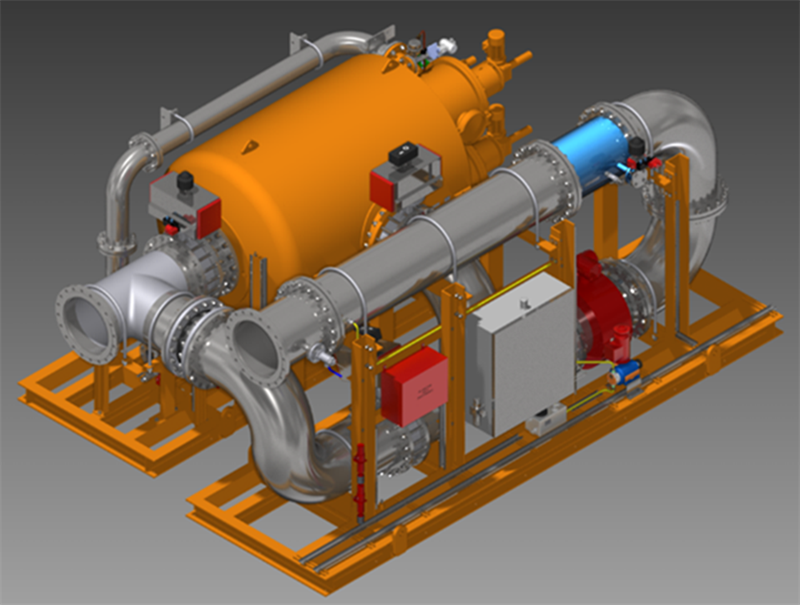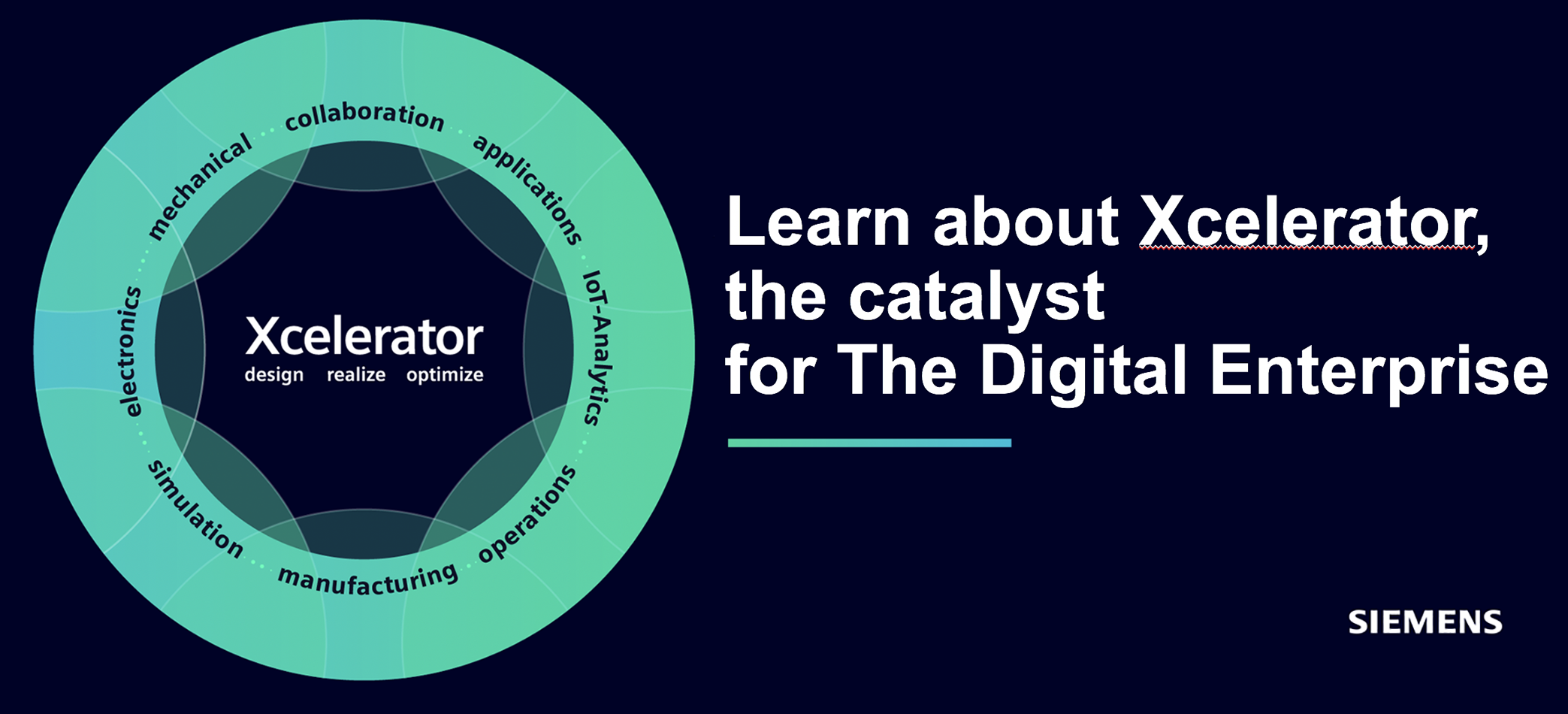Where is PLM headed? The question is not unnatural given the technologically dynamic times, but the answer is perhaps simpler than you think: ”We are on the path to the cloud,” says Zandra Nilsson. Maybe not a totally expected answer, but how true it is:
”If you scale the answer down to its core, sooner or later it is the cloud that applies,” she adds. ”Working with software and infrastructure as a service–SaaS and IaaS–has huge advantages; so great that the sum of the value they add becomes hard to resist: Access to all imaginable software resources at one and the same place available at any time, the cloud’s exponentially growing performance in processing the huge amounts of data that comes with the digitization of the entire product development and operation processes, its scale-up and scale-down capacity, the globally connected collaboration platforms via AWS or Microsoft’s Cloud Azure, etc., everything points to the unbeatable power of this combination, value for money and simplicity.”

As More’s Law – but for PLM’s cloud and SaaS journey
It is like a kind of equivalent to More’s Law, the one that predicted the phenomenon that the number of transistors that fit on a chip grows exponentially with the capacity doubling every twelve months. If one wanted to formulate an equivalent to today’s key to PLM success, it would perhaps read: ”What can be done in the cloud will sooner or later be done in the cloud doubling down the volume every twelve month.” The principle is correct, says Nilsson, but perhaps the time factor is a bit exaggerated formulated like that.
”Certainly, many dare to bet on this, while others postpone the matter,” she adds and points out that both Siemens’ well-founded central roadmap and the customers’ growing interest still indicates the reasonableness of this journey’s direction: ”Yes, going forward is about the journey towards full SaaS and getting the customers to join us in transforming to the cloud are the biggest challenges,” she claims.
For Siemens and Zandra Nilsson this is a reasonable conclusion, as it also is for the company’s toughest competitors. Just consider the sequential logic of how development in 3D CAD, design, and PLM has looked so far: From 3D CAD software in extremely expensive workstations and mainframe environments, to CDs and downloadable software in PC formats, ending up in today’s situation with offers of the entire IT stack in the cloud, and everything still under dynamic development loops. You don’t even need to build the infrastructure locally in the companies; it’s in the cloud. Among other things, in the Siemens cloud, whose software and program platforms all have the suffix ”X”.
”We really believe in this,” she says, pointing to the Nordic industry’s ability to pick up product realization news. ”Nordic industry has always been at the forefront of PLM and has shown great potential when it comes to adopting new technology, methodology, software, and the ability to translate ideas around these factors into practice in concrete terms. We are good at this by collaborating and creating sustainable value chains. But more can be done, evolution never rests. Not least the sustainability page is hugely central today when the planet’s future is under severe pressure. We must be able to adopt and establish technology, methodology and paths that lead to net-zero effects in the balance between energy resources, material turnover, economy and circularity. In this, the cloud becomes one of the most important keys on the way forward. Not least because it can contribute to democratizing access to the technology needed to develop and operate the new sustainable products.”
We will get to how this reasoning is substantiated later in the article.

Siemens X-factor: Xcelerator-as-a-Service
Those who want further confirmation of Siemens Digital Industries Software’s view and investment in this may remember what Joe Bohman, EVP of PLM Products and the company’s global head of the PLM solution Teamcenter, said about the matter in a previous PLM&ERP News article:
”All Siemens cloud-based solutions have the letter X as a suffix. This, in turn, is tantamount to them being Xcelerator-as-a-Service solutions, with the cloud as the technical platform.”
According to Bohman, the Xcelerator-as-a-Service portfolio (XaaS) means that they now bring together the powerful functions of the company’s rich software portfolio through purpose-built technology and service experiences that are, ”tailored to the requirements of industries and individual users.”
This expansion of the cloud services portfolio, since its announcement during the Realize Live event in Las Vegas earlier this year, has been charged with CAD software NX X, the new and very interesting manufacturing and shop floor app Zel X, MOM and MES software Opcenter X, the CAE platform Simcenter X and Teamcenter X Essentials (PDM).

The low-code platform Mendix is growing in importance
”For context, let me also say a few words about our low-code platform, Mendix. This solution has great significance in what we touched on earlier during the interview, simplicity and democratization,” adds Zandra Nilsson.
The finesse of this type of platform basically lands in an increasing need for several stakeholders to be able to manage the increasingly complex digital chains. Efficiency at all points throughout the chain requires simplicity on the surface, paired with the ability to manage the complexity underneath. The point is to create customized applications without tedious programming that connect almost everything that has to do with product realization, from requirements, product development, simulation, purchasing of inputs to production and related logistics. In Siemens Mendix, you can create individually adapted applications with dashboards that provide a total overview via drag’n’drop. Nilsson again:
”It is, of course, extremely valuable, not least in the solution’s ability to delegate power throughout the entire organization, which, among other things, involves ensuring stable ’systems of record’ and creating structured, stable values in all places in a simple way.”

The path forward
Teamcenter X thus has the integrations to the deep core of the Xcelerator portfolio: FROM CAD and Polarion X for ALM, Application Lifecycle Management, to tools that assemble integrated, multi-domain BOMs, and provide the basis for the complete digital twin TO Mendix with APIs for all Siemens own solutions, of course, but just as simple connections to software from other players in the PLM industry such as, SAP, Ansys, AutoCAD, etc.
It should be added that everything within the Xcelerator-as-a-Service concept is not yet complete, but the path forward is marked towards a cloud market that will globally exceed one trillion dollars in 2026 and several billion in local currency in the Nordics within just a couple of years.
Zandra Nilsson also confirms that there is great interest among the company’s Nordic customers, many of whom are globally active OEMs.
”Pretty much every PLM leader I talk to is very interested in what we do with the cloud, and the answer is Xcelerator-as-a-Service. At the same time, it is clear that it takes courage to invest in new ideas, in parallel with understanding and resources from management and the board.”
Can provide 60 percent lower IT costs
This company’s eventually complete set of digital tools, such as the SaaS and X solutions, are designed using the Siemens ’digital thread method’, so that everything is connected.
Further Siemens Nordic sales director point out that the SaaS solutions are secure, individual and adaptable to the low-code software Mendix.
”It will be as Joe Bohman said in Las Vegas: ’With this, we contribute to tearing down barriers. Instead, we create platforms that bring together groups of experts, giving people the opportunity to discuss and work together.”
In parentheses: Joe Bohman pointed out during his speech that customers say they are 33% faster to market with this approach, achieve this at 60% lower IT costs, and are 100% up-to-date. All with built-in scalability.
Moreover he said that breaking down barriers is done most efficiently with sharp digital tools and it is clear that the cloud as a technical distribution platform facilitates this type of interconnected process flows.
Thus; all tasks and processes on one platform, giving everyone in the entire value chain the opportunity to work together anywhere, at the same time, with the tools and data they need, all in one place. All of this, according to Zandra Nilsson, “Run on the PLM industry’s most robust interoperable data backbone, Teamcenter.”
It is not difficult to see a promising future in this concept.

Heavy customers such as Sandvik, Husqvarna and Wärtsilä
There are no small players Zandra Nilsson meets out there in the PLM market. In her team, the largest Nordic manufacturing companies are managed in areas such as high-tech, batteries, green energy, industrial machinery and medtech/pharma. Among Siemens Digital Industries’ customer companies in the Nordics, as reported in earlier PLM&ERP NEWS articles, are actors such as Sandvik, Wärtsilä, Epiroc, Husqvarna, Alfa Laval and Danfoss to name a few. What unites them is that they and the other customers have high demands on the industrial IT support, PLM, and sub-PLM solutions that Siemens Digital Industries Software delivers and in which they invest large sums of money. Failure is not an option, which in the light of the dynamic changes that are now trending in virtually all industrial activities does not make matters easier.
“Right,” she says. ”It is not an easy balancing act to manage in today’s industrial landscape. Neither for those who are PLM users nor for us as providers of solutions. The cloud, the digitization of the processes, AI, sustainability and regulatory requirements that, among other things, result in things like increased complexity, electrification, more electronics and perhaps above all software that takes over in a product content whose life cycles tend to become shorter and shorter. At the same time, the competitive situation is intensifying in all markets. It increases the demands for innovative solutions, increased product performance, automation, smarter manufacturing, and certainly also new business models such as products-as-a-service.”
Sustainability issues in focus
So, what are customers asking for today?
”Oh, there are many different things, of course, that are related to what kind of products they have, specific market situations, challenges and objectives. But this given, things like process digitization, the cloud, sustainability, internal and external collaboration and AI are hyper current. Then, general technology areas such as electrification, electronics and software are things that actually pervade most of our customers’ operations.”
But today, above all, the desire to create sustainability is something that is commonly discussed, notes Nilsson.
”Absolutely, the trend is there and many companies are doing a great job, however few are pushing it all the way. I can see a great potential here.”
What advice do you give regarding sustainability efforts?
”Several points, but the most important are:
• Control over data via a strong digital backbone such as Teamcenter
• Make sure to formulate sustainability goals and analyze the development potential around the goals
• Use simulation to ensure product design and manufacturing is optimized and tested before manufacturing/production
• Look holistically at the value chain and make demands on the suppliers
• Dare to use digital models, twins and threads solutions
• Design for recycling
• Optimize materials and quality.”

Opening new windows of business success
Necessity is somehow the mother of invention. When new technologies arrive, which can handle completely different things than before, windows of opportunity are created to expand the thinking around what it can generate in terms of new revenues around a product. Undeniably, this can be a valuable business entry when times are characterized by a lot of uncertainty and low economy. This is also a page in Zandra Nilsson’s everyday life book and tough challenges. In today’s troubled times, no one can ignore the economy and economic conditions, which often put pressure on the budgets of customers and potential customers. Then it is important to see possible inputs. An ability to look around corners.
The good news, because such exists, is that few digital tools can live up to meeting this, for so many companies in complex situations, like today’s PLM tools.
”Absolutely, we see enormous dynamism in technological development. Today, we can deliver tools that cover the entire value chain from requirements specifications and product development to smart factory automation and the operation of products in the hands of the end-customers. We have the visions and can deliver on them,” she concludes, possibly with a bit of a bitter jab at the toughest competitors.
The story of Zandra Nilsson is, in long passages, that of a world of product realization in dramatic change. Anyone who wants to succeed must be able to see where the compass needle is pointing and have the ability to translate the visions that exist in the direction of the journey into concrete platforms and selling packages. This requires a good overview of the playing field, that you are driven, structured organized, persistent and responsible. Other important qualities are the ability to give a genuine sense of committed presence both among customers and the sales team you lead.
Zandra Nilsson has all that. That’s why she has the job, not because she’s a woman.






